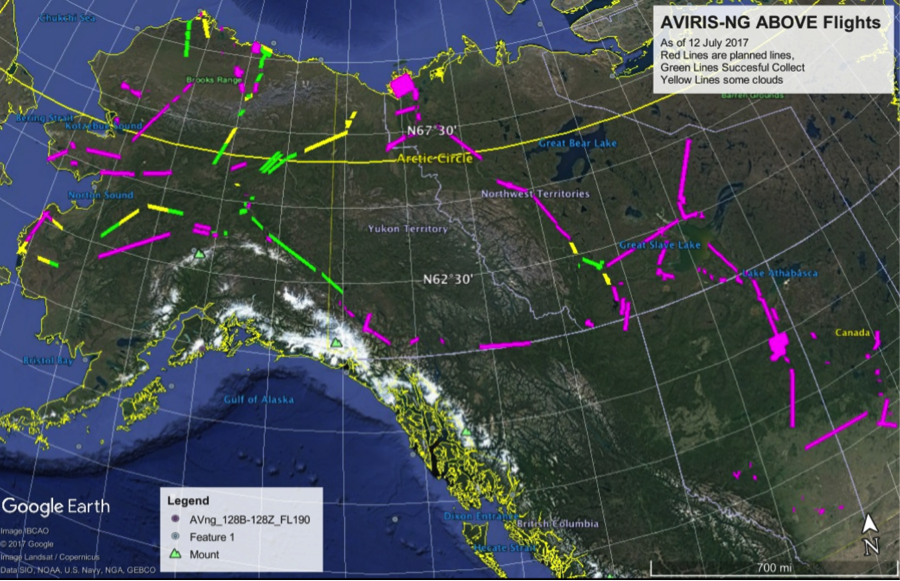AVIRIS-NG - (Airborne Visible and Infrared Imaging Spectrometer-Next Generation)
The Next Generation Airborne Visible and Infrared Imaging Spectrometer (AVIRIS-NG) departed Canada on the King Air B200 on 26 August. The flight crew completed NASA funded Methane collections in Alberta. The aircraft transited through the Pacific Northwest and remained overnight (RON) on 26-27 August in Portland, OR and collected Methane targets in the region.

